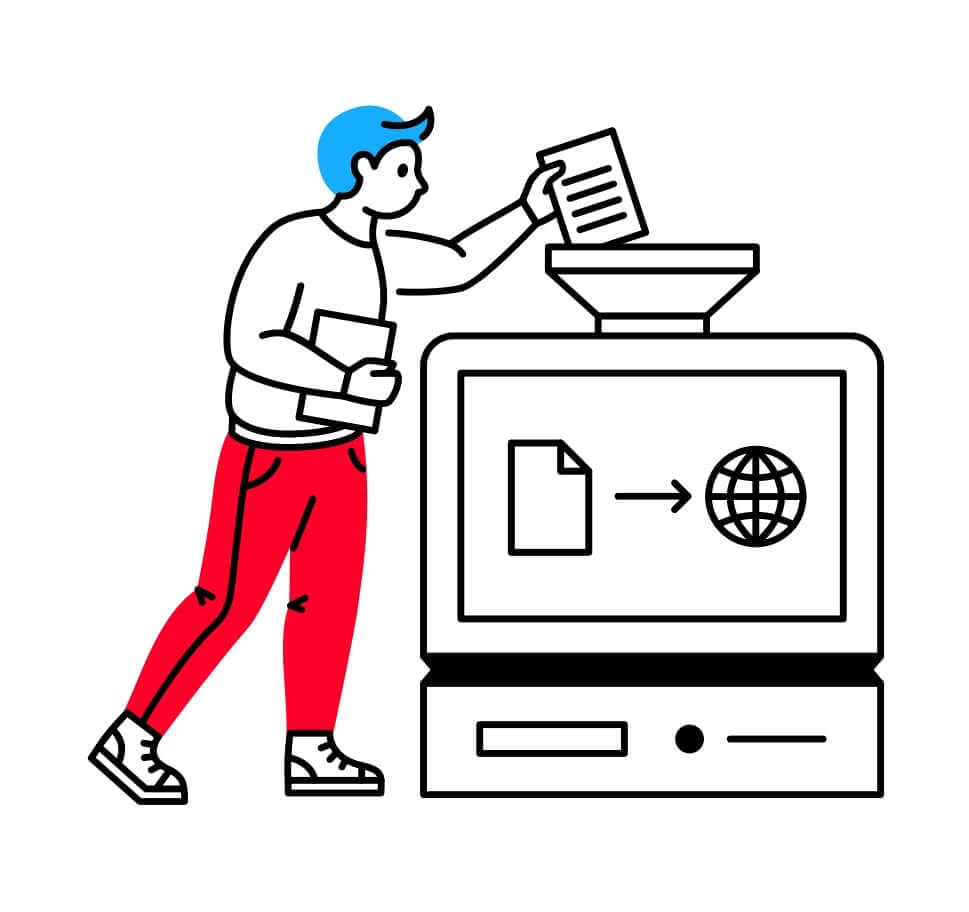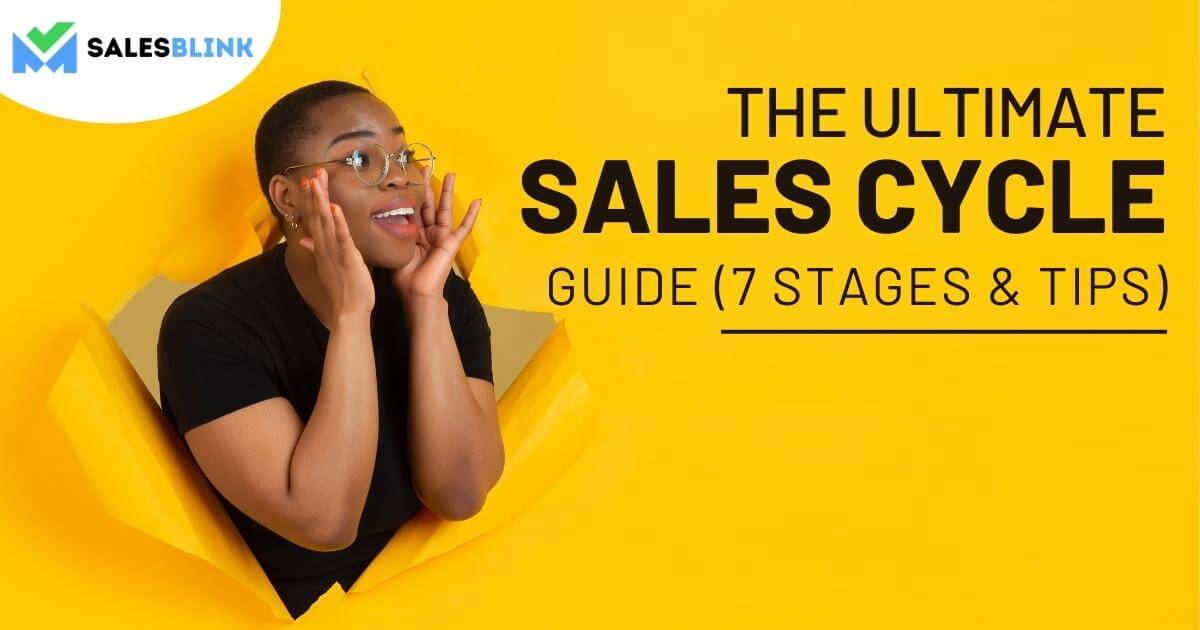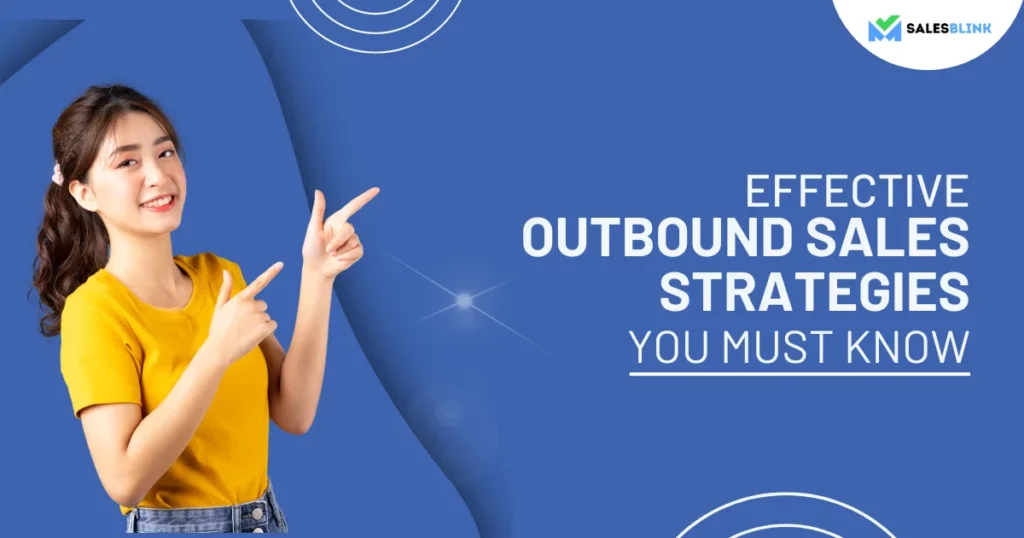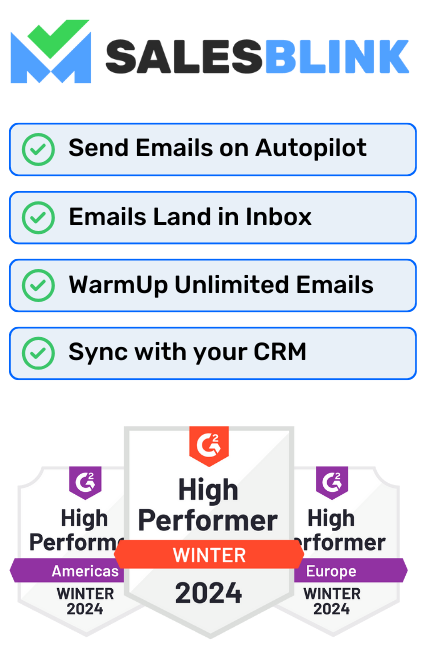The Ultimate Sales Cycle Guide (7 Stages & Tips)
We just love how fast The Flash moves. Won’t it be great to have The Flash supercharge your revenue as well? Probably in another universe! However, having a formal sales cycle can help you increase your revenue generation rate by 18 percent.
Do bear in mind that every organization follows some basic sales cycle stages to close deals regardless of their industry. And, we have further simplified the process just for you. For, this blog is all about sharing a clear and consistent approach for nurturing leads.
So, let’s start with the basics before getting into the stages of the sales cycle!
Table of Contents
- What Is A Sales Cycle?
- Why Is A Sales Cycle Important?
- How Is The Sales Cycle Different From Sales Funnel And Sales Process?
- How To Create A Sales Cycle?
- What Are The 7 Sales Cycle Stages?
- Sales Process KPIs You Should Know About
- B2B vs B2C Sales Cycles
- How Can You Improve Your Sales Cycle?
- How To Optimize Your Sales Cycle?
- What Is Sales Cycle Management?
- Best Practices To Create Your Sales Process
- FAQs
What Is A Sales Cycle?
Sales cycle definition – A sales cycle is a series of steps that you must follow to obtain new customers. It is divided into several phases that correlate to the sales funnel phases and describe a task that the salespeople must complete before bringing the sale to completion. Each of the sales cycle stages serves a specific purpose.
It’s a potential client’s journey from identifying the need for a service or a product to making a purchase. The sales process acts as a blueprint for the sales reps. It’s a step-by-step process that a salesperson follows to convert a prospect into a long-term customer. Both B2B and B2C organizations use the terms sales cycle and sales process interchangeably.
A sales cycle encompasses much more than a sales script. It includes everything a salesperson does before contacting a prospect, during the nurturing period, and after closing the sale. It also specifies triggers for when your prospect has progressed from one level to another. The most excellent method to make your sales more consistent, unify your entire team’s efforts, and scale-up is to have that structure in place.
Why Is A Sales Cycle Important?

Businesses can gain insight into the productivity of their sales activities by using a structured sales cycle. By identifying and analyzing the stages at a detailed level, you can understand what worked and what didn’t. Defining a comprehensive cycle in your organization is critical for the following reasons :
- It helps you know where your current prospect is in the sales cycle, their needs, and how to meet them.
- It helps eliminate bottlenecks and strengthens the sales processes. With clearly defined sales stages, it’s easy to spot when and where something isn’t quite right.
- It’s easier to onboard and train new sales representatives. While training new reps, it’s simple to explain what happens at each stage and where problems may arise.
- You can analyze the success of your sales team and recognize great players thanks to the transparency of the sales cycle.
- A buyer-centric cycle aids in understanding your target audience better and delivering the most pertinent information.
- You can structure your team more effectively if you understand your sales cycle deeper. For example, if you look at your cycle and discover a bottleneck, you can re-assign duties to your team to ensure that enough is getting done at that particular stage.
- The length of these procedures can be tracked, investigated, and compared to the industry standard length. If your cycle is shorter than the industry average, it could indicate that your sales force is more productive than your competitors.
- The detailed information from your sales process can aid in forecasting future sales. For example, based on the average length of your sales cycle, you may use the data to determine how many sales each salesperson can make in a month and which sales are most likely to succeed once they reach a given point in the buyer’s journey. You can also use SalesBlink’s Free Sales Commission Calculator to calculate how much revenue you’ll generate upon every sale.
How Is The Sales Cycle Different From Sales Funnel And Sales Process?
The sales cycle is how you identify, qualify, contact, negotiate, close the deal, follow up, and build a client relationship. However, the sales funnel is the same process but for viewing in-process deals. It contains a list of all active sales projects resulting from contacts with prospects and clients.
The sales process usually refers to the repeatable actions your sales team performs to get prospects to move from an early stage to the final stage of closing the deal.
How To Create A Sales Cycle?
Your company utilizes a series of procedures to generate leads and close sales. Your sales pipeline and funnel should be aligned with your company’s specific sales process, offering a blueprint for your sales staff to follow. Review your sales funnel, turn pipeline stage activities into stages, visualize your sales process, and establish a system to track each step to create an effective sales process.
It would help if you considered the following when building a sales cycle:
- Your service or product
- Your buyer’s profile
- The number of people who make decisions
- The merchandise’s cost
- Prerequisites for your product.
Selling a B2B product requires many decision-makers, high-value deals, and a lengthier sales cycle than selling a consumer product. Because of the general lower deal value and the smaller number of decision-makers involved, the cycle for consumer items is typically shorter. While most sales cycles have a set of logical phases in common, you must tailor them based on the product and prospect type in either scenario.
What Are The 7 Sales Cycle Stages?

Here are the B2B sales cycle stages:
1. Prospecting
Prospecting is the first stage of the 7 stages of the sales cycle. You may be looking at your target customer profiles at this point, selecting possible clients to contact, and deciding how to approach them. Create an Ideal Customer Profile first (ICP). Your ICP will be, at its most basic level, a fictional organization that:
- Represents companies that both provide you high value in terms of revenue, influence.
- You provide excellent value, usually in terms of ROI, and improved service.
You can start constructing a database and list all the potential prospects that suit that profile after building an ICP. You’ll need to create a list of prospective leads and qualified leads for your sales reps once you’ve identified the right companies.
You must qualify your prospects even if you’re working with the best ICP. Try looking for the following:
- Need
- Budget
- Authority
- Need at the Right Time
Then, based on your specific needs, check at additional factors like company size, growth, geography, etc. While you may have to meet your lead in-person to qualify them fully, your preliminary inquiry should indicate their qualities.
2. Making Contact
Now that you found them, it’s time to contact and build a relationship with your prospective client.
- Choosing the Best Approach – Email is an excellent channel to communicate with your lead directly and personalize your outreach. Try sending them between 8 a.m. and 10 a.m and from 3 p.m. to 4 p.m. because people are usually not busy and might also check their emails to wind up their work in the evening. cold calling is another tried and tested option that works well. You also have social media, and the way you use social media is highly dependent on the platform and your target audience. Combine it with email marketing to boost your chances of connecting with the lead. It would be a good idea to use multiple channels for outreach.
- Execution – Before you reach out, know what you want to accomplish. Use the outreach to establish and introduce yourself, earn trust and finally start a conversation.
3. Qualifying Your Prospect
By qualifying your lead, you can learn more about your target prospect. When making decisions, try to understand their sales goals, challenges, budget, and other important factors. It’s also critical to confirm that you’re engaging with the proper decision-maker.
It is also a chance to qualify them as prospects and verify that they meet the primary criteria. Don’t be discouraged if you discover they aren’t a good match. It’s pretty unusual for less than 50% of your initial options to be a good fit. The most straightforward approach to determining if a prospect is a right fit is to speak with them directly.
4. Nurturing Your Prospect
Prepare to answer essential questions regarding your unique offers and what pain points you can solve for them. Nurture your leads based on what you learned. Lead nurturing includes educating leads about your product, service, and industry, personalizing your message, and resolving common issues. Here you attempt to build a reputation as a helpful, responsive, and dependable resource in your field of expertise.
You’ll almost certainly run across interested and generally qualified prospects but aren’t ready to sign up right now for whatever reason. In such a situation, it’s critical to keep in touch periodically and provide assistance to stay top of mind. You’ll be the first person on their mind when they’re ready to buy.
5. Presenting Your Offer
So far, the cycle is prospect-centric. You’ve reached out to them, learned about their needs, and addressed their concerns. It’s time to start putting all you’ve learned to good use and present the best offer possible.
Maintain your offer’s relevancy, targeting, and customization concerning the needs you discussed before. Make your proposal relevant to their problems, budget, and long-term objectives. Finally, think about how you can present and market your offer.
6. Overcoming Objections
Typically, prospects will object to your offer. Price vs. value, risk, contract terms, and other issues are some of the most typical sales objections. It’s best to address these issues as quickly as possible, ideally during the nurturing stage. However, dealing with them in advance is not always viable. When reacting, be patient and empathize with their difficulties. Rushing or pressurizing won’t help in any way.
After you’ve clarified everything, request them to affirm that you have resolved their concerns and make sure that your lead understands your offer.
One piece of advice to get to the root of any issue is that you’ll always have to ask more questions. After you pose a question, try to pay attention to their response rather than thinking about what you’ll say next. You can proceed to the final stage when you address all the objections.
7. Closing the Sale
Once you’ve done a fantastic job, complete the sales cycle by closing the deal.
If the prospect’s profile matches your ICP, you’ve reached out in a way they prefer, and you’ve provided value, they should be willing to buy. You should never feel compelled to use deception to persuade them to buy, but even the most ideal prospect may need a nudge before deciding. You can’t count on them to close on their own. The objective is to make it very simple and approachable for them to understand and say yes.
Closing the sale also lays the groundwork for the next steps. You can now request a start date or give them an additional bonus if they sign today. Avoid giving discounts, even if it seems contradictory. Closing is also a good time to remind them of a specific result you think you can deliver for their company. Feel free to use your imagination in any way you like. You can also try the following:
- Arouse a sense of urgency
- Provide financial incentives
- Offer free trial
Stick around after you’ve closed the deal and received their commitment to answer any remaining probing sales questions and give them clear subsequent actions. If you’re having a face-to-face meeting, offer to send them and their assistant or superior a summary email that summarizes your discussion and agreement.
Follow up – Finally, despite your best efforts, things beyond your control may result in the response being ‘No’. In this case, adding them to a nurture campaign and following up with any prospects who aren’t ready to say yes regularly is the best thing you can do. You could also use this opportunity to connect with others in the organization.
Sales Process KPIs You Should Know About
It would help track a few key performance indicators (KPIs) to enhance your sales process further. This will assist you in determining whether or not your cycle is effective. For optimal sales performance, keep track of the following 2 critical KPIs:
- Number of sales per month – This can assist you in figuring out how many new clients you could bring on board. If you compare this to the prior month’s figures, you’ll know where you stand. If your figures are lower this month, you will know that it is time to optimize your sales process
- Length of your cycle – The shorter the cycle, the better. You may improve this attribute by assigning sales reps to follow up on cold leads to increase conversions. Instead of immediately selling these, you can share resources with them, give discounts, or even prolong their trial period. Analyze the length of each sales rep’s sales cycle on an individual basis. They are doing a fantastic job if their cycle is shorter than the competition. If this isn’t the case, work with them to improve it.
B2B vs B2C Sales Cycles
B2B sales generally requires more than one person to make decisions. It has to do with the sale of goods and services from one company to another. B2C sales is the process of a company cross selling a product to a single customer. The B2C sales cycle is shorter because the customer is encouraged to buy the product right away. Furthermore, it rarely involves more than one person in the decision-making process.
How Can You Improve Your Sales Cycle?
Here’s how you can improve your sales cycle,
Using the right approach to prospecting
Begin to weave your personal story into your sales pitch. Make your story about your prospect and the hardships they’re going through that you can help them with. It should be relevant to the discussion you’re having. Try to listen more than you speak. Make use of a pre-contact plan that will pique your prospect’s interest before you contact them. Create a marketing pitch that reflects your individuality and distinguishes you from the competition while supporting your sales objectives. Send it to the prospects before you call them.

Using automation
It can help you cut down on non-sales activity. This frees up time for your salespeople to focus on sales and repeat business. There are numerous sales automation tools that simplify your tasks. And SalesBlink is one of them that takes you from outreach to closing lightning fast.

How To Optimize Your Sales Cycle?
Here’s how to optimize your sales cycle:
1. Reduce time spent on things that bring minimal value
The average salesman spends just 36% of their time selling, and the remaining time goes to administrative tasks. Your staff can easily outsource their support activities and focus on sales to optimize your sales cycle.
2. Carry out follow-ups carefully
Without following up, you can’t change the prospect’s ‘No’ into a ‘Yes’. You have to be quite persistent with your approach without getting too annoying.
3. Request minimal commitments
A foot-in-the-door approach can help you build a stronger relationship with your prospects. You use this strategy to encourage them to agree to close the deal by asking them for a tiny favor after another.
4. Use social proof
Case studies and customer testimonials are great for both social proof and countering arguments with your leads. Make sure you make the most of them.
5. Train and educate your team
You can’t expect great results without properly training reps and providing them with the right knowledge. They have to know about every phase of the cycle in detail.
6. Supplement a sales cycle with a service cycle
As the importance of service and customer care grows, more organizations are beginning to add a service cycle to their sales cycle. You have to synchronize or coordinate the it in this scenario.
What Is Sales Cycle Management?
Sales cycle management involves keeping track of what happens at each stage of the sales life cycle and adapting to the buyer’s behavior throughout those critical times. The elements of sales cycle management include : Sales Operation, Sales Strategy and Sales Analysis.
Best Practices To Create Your Sales Process
As you know, a sales process refers to the repeated steps a rep follows from the start of the sales cycle to the end of it. To manage your sales cycle well, you have to focus on creating an effective sales process. It would help if you follow the sales process best practices outlined here while creating one for your business,
1. Review the existing sales process
Find out the strengths and weaknesses of your sales process. In the absence of a process, you can always look at how your sales reps work towards converting prospects. Speak to each of them to understand what brings them results and what doesn’t.
2. Define your goals
When you set long-term and short-term goals, it gives the entire team a purpose and makes them work hard to achieve it. They also help you measure the performance of the new sales process.
3. Get into the customer journey of your ideal client
Study how a prospect moves from one phase to another before becoming a satisfied customer. Find out how they came to know about you in the first place.
4. Explore the challenges faced
Understand the customer’s pain points and see how your product or service can resolve them. Try to think from the prospect’s perspective and find your answers.
5. Align your sales process to your organization’s culture
All sales processes are not the same, just like how two companies aren’t. You may see similarities, but in the end, they have to align with the culture of your company. Ensure that your sales process gels well with the company motto.
6. Let the sales team adopt your process
After you finish creating your sales process, ensure that your team adopts it. Get their feedback and try to make them feel valued.
7. Keep the sales process repeatable
Ensure that the process is easy to repeat so that everyone in the team can use it and fetch results.
8. Perform result analysis
To check the effectiveness of your sales process, you have to analyze the result periodically. Also, don’t forget to get your reps’ opinions.
Start Creating Your Sales Cycle Today!
We hope this post has helped you understand what sales cycle steps or stages are and why it is important to have them in place. It would be a good idea to start today if you don’t have a systematic approach. You never know, it may make your businesses outperform your competition!
FAQs
A sales process refers to the repeated steps a sales rep follows from the beginning of the sales cycle to its end. You have to focus on creating an effective sales process for managing your sales cycle properly.
A sales funnel refers to the journey leads go through on their way while purchasing a product or service. The three main stages of the sales funnel include top, middle and bottom.
Managing the sales cycle requires effort from your end. The main elements of sales cycle management include: Sales Operation, Sales Strategy and Sales Analysis.
A typical sales cycle can vary based on the industry, product complexity, & target market. Generally, it can range from a few days to several months. For simple, low-cost products, the cycle may be shorter, while high-value, complex solutions may require longer cycles.
To measure the sales cycle, track the time it takes from the initial contact with a potential customer to the closing of a deal. Start calculating the average number of days between key stages in the sales process, such as lead generation, qualification, proposal, negotiation, & closing.







